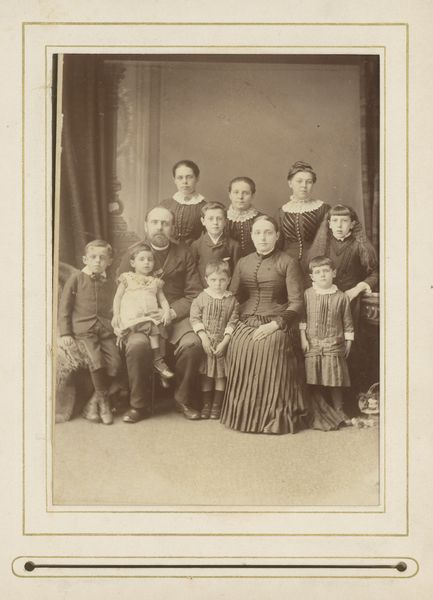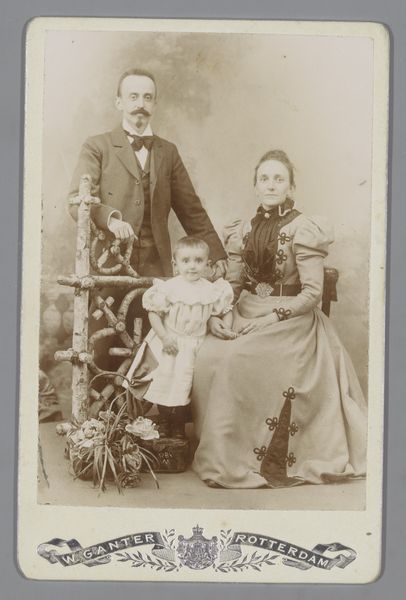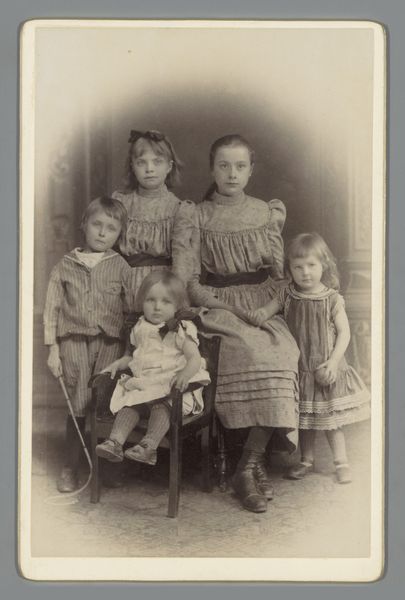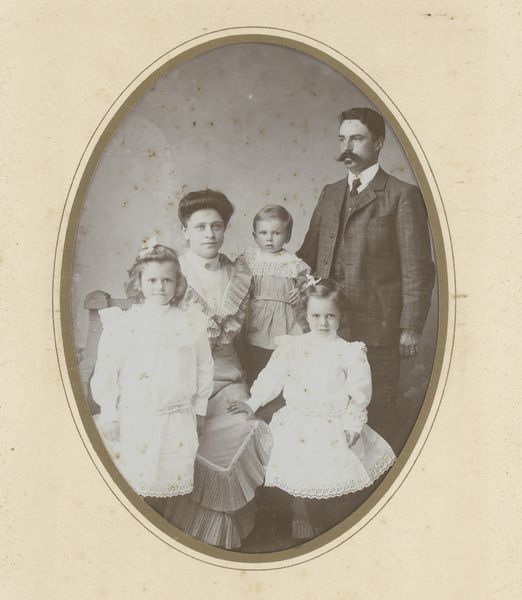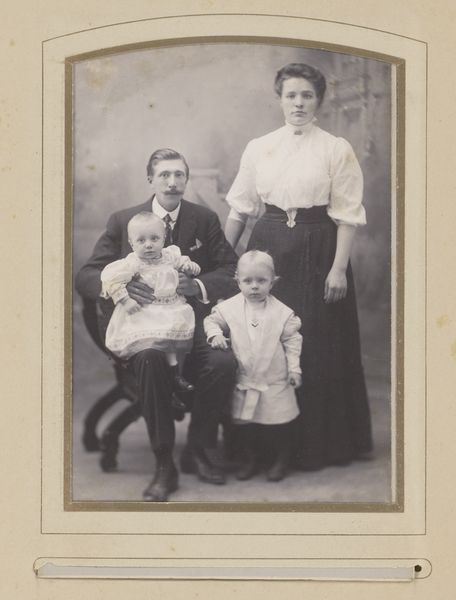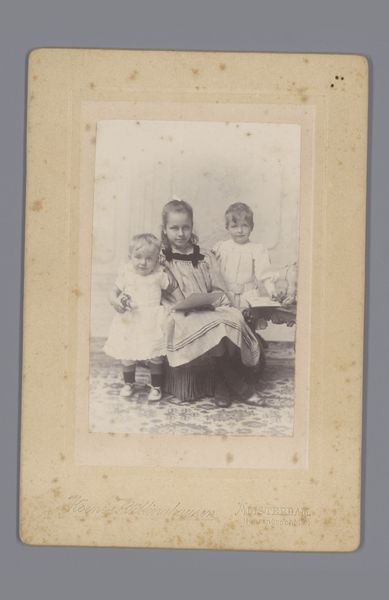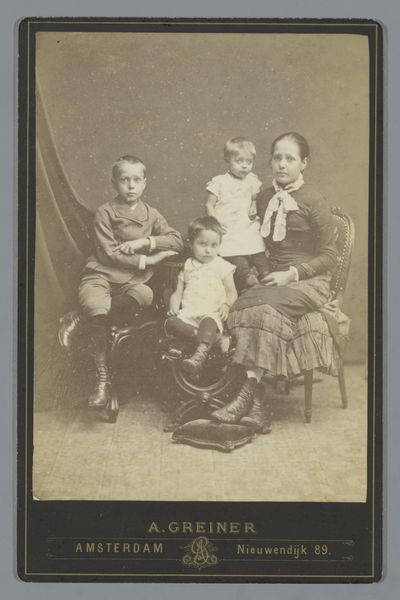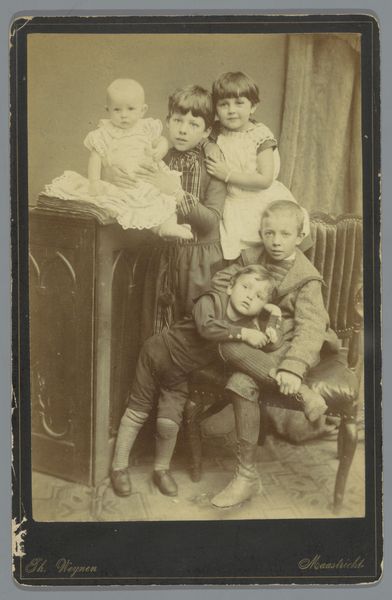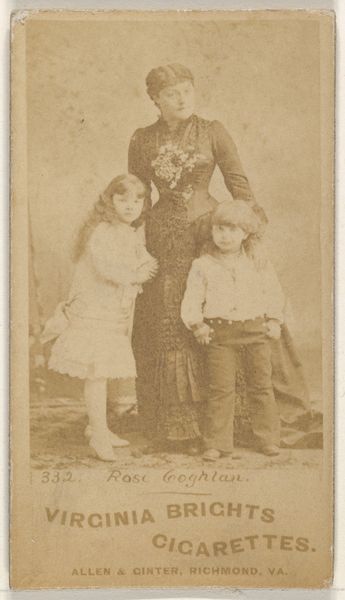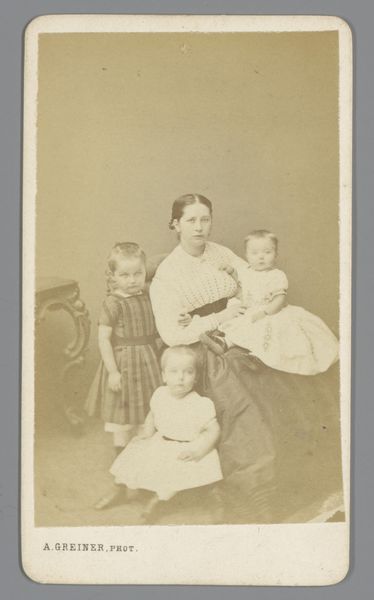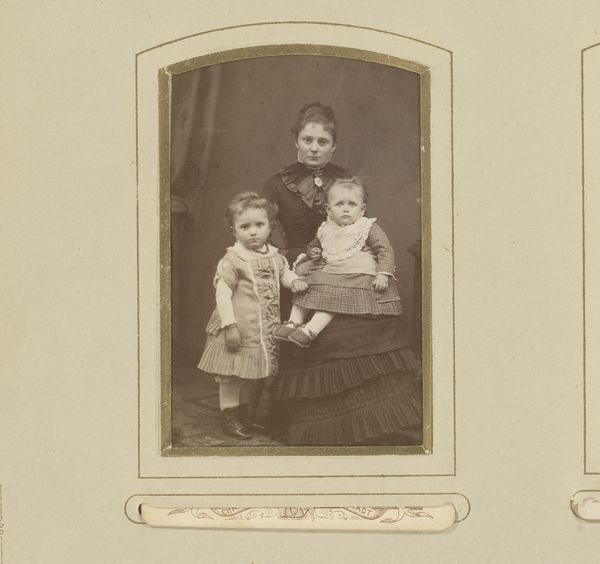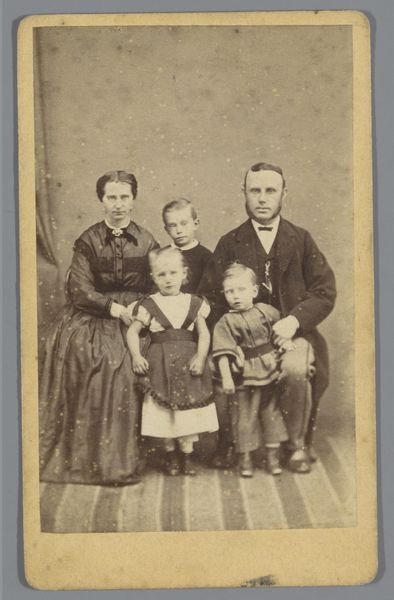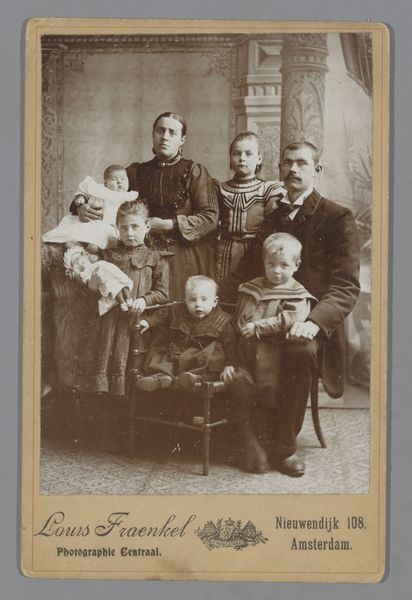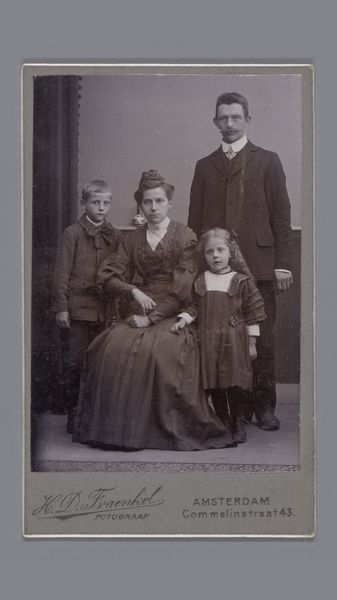
photography
#
portrait
#
photography
#
group-portraits
#
genre-painting
Dimensions: height 105 mm, width 63 mm
Copyright: Rijks Museum: Open Domain
Curator: Welcome! We're standing before "Groepsportret van een gezin," which translates to "Group Portrait of a Family," a photograph believed to have been captured sometime between 1855 and 1885 by John George Kirby. Editor: My first impression? Well, besides the sepia tones transporting us back in time, there’s a formality to it, right? But underneath, you sense the quirky individuality bubbling. It’s like everyone’s trying so hard to be proper, yet you see their personalities peeking through the cracks. Curator: That duality is quite common in the history of family portraits. Photography in the mid-19th century was less about capturing spontaneous joy and more about projecting a particular image of social standing. The very act of posing was itself a statement. The clothing, the arrangement—each element served a purpose. Editor: Totally. The clothing is almost a uniform – practical, somber – everyone is kind of blended, except Dad’s striking facial hair – what a fabulous display of rebellion within societal norms. He looks rather serious though, like he's personally responsible for upholding Victorian values! Curator: Indeed, men’s fashion rarely evolved with as much ostentation during this period; and as a social commentary, his protective stance over his wife, and especially the children, signified stability. Photography provided a relatively accessible medium for middle-class families to participate in image-making that once only the upper echelons of society could access through painted portraits. Editor: It is still compelling though - as much as it is a "record" of their time - I get a kind of melancholy just looking at them - and not just from the lack of smiling faces. Maybe knowing their long gone now, I wonder about their individual lives, if they got their dreams - there's a lot behind these stern facades. Curator: Agreed. It allows us to ask significant questions about their life in a long bygone era. As photography became democratized, it simultaneously served as propaganda, advertising, and political statements about everything – especially ideal familial constructs. This artwork becomes much more than a visual; it echoes profound political statements that dictate what society looks like during the era, as well. Editor: Exactly. It makes me appreciate the "rawness" we aim for now with our candid snaps. The next time I see a portrait in this style I might consider who is omitted, who holds power in it, what is not spoken of – because underneath it all we each long to be truly seen.
Comments
No comments
Be the first to comment and join the conversation on the ultimate creative platform.
